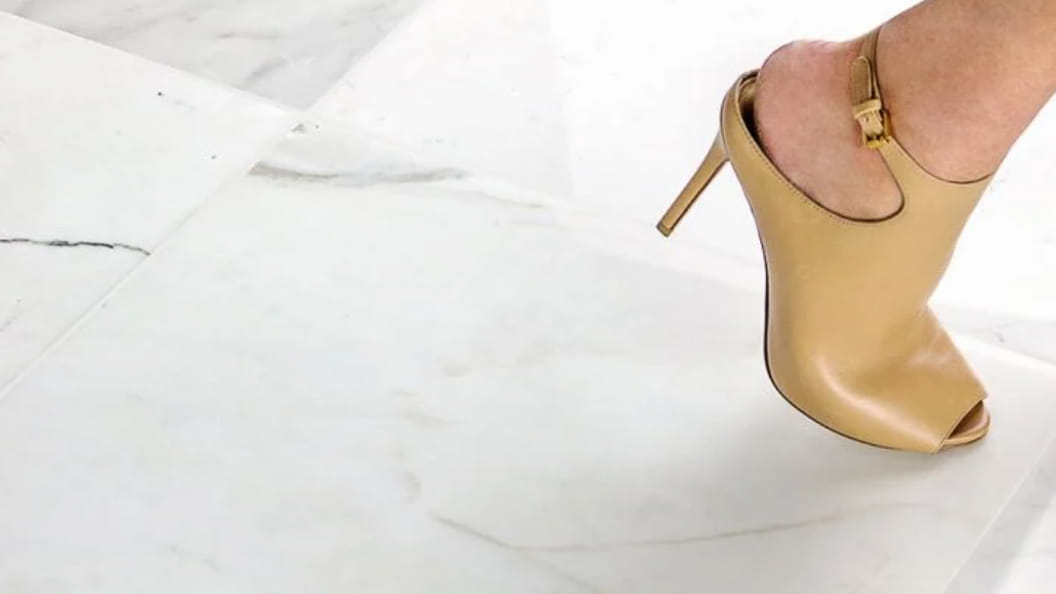Care & Maintenance of Natural Stone
Natural stone is one of the most time-tested and enduring materials available. As the building material of some of the most ancient and important architectural structures in the world, it has proven exceptional natural strength, durability, and long-lasting beauty.
To make sure stone’s potential to sustain for the ages, it is important to take proper care and maintenance of it. This includes using appropriate cleaning materials, applying sealing or coating if needed, and knowing how to identify damage and wear. This guide will help you learn the best practices for cleaning, sealing, and maintaining your natural stone tiles, to ensure their look and performance for a lifetime.
This Guide Includes:
- Evaluating your stone’s current condition
- Sealing
- Cleaning
- Identifying and removing stains
- Damage repair
Evaluating Your Stone’s Current Condition
Before approaching any type of care or maintenance, it is important to carefully assess the current condition of your stone. Here are a few basic questions to ask yourself when trying to estimate the state of your natural stone tiles:
What type of finish does your stone have?
The most common types of finish for natural stone are honed and polished. You can also have a cleft, flamed, sandblasted, leather, textured, or split face finish. If you notice that the original finish of your stone has changed over time, it may be necessary to restore your floor before sealing and use.
Are there any coatings such as wax, acrylic, etc. on the stone?
Natural stone is often sealed with different materials to avoid staining, etching, and other damage. If your stone has a coating, you will need to determine what it is to avoid cleaning it with the wrong material.
Are there any signs of worn sealing on the stone?
Once you determine which type of coating on your natural stone, you will also need to evaluate if it has damage and needs to be removed and replaced. A simple water drop test is often used by placing about a tablespoon of water on your stone for 15 minutes. If the water is absorbed or your stone becomes darker, then resealing is required. It is recommended that you perform sealing tests in heavy traffic and high-use areas to confirm uniformity throughout your floor or wall.
Is there any sign of cracking?
Cracks and fissures are a common occurrence in natural stone and are often a part of its individual nature and beauty. Some stones are known for their larger pores, like travertine, and are sought after for certain applications. It is also common to receive stone that has cracks and fissures that have been filled to ensure an even surface.
If other cracks appear after installation, this could be a sign that the tile was not properly supported during installation, the stone had underlying structural issues, or the stone was put into an application where use or traffic was too extreme for that type. If the cracks are not extreme and do not cause any hazard, they can be filled and treated. If the cracks are more extreme, then the affected area should be replaced with proper application and installation techniques considered.
Is there any evidence of staining?
Staining is a common problem with natural stone. Different natural stones have different levels of porosity or pores in the material that allows both air and water to infiltrate. If your stone isn’t sealed or protected from these different elements, it is very easy for it to show the effects of contact with different substances. Refer to the Identifying & Removing Stains section of this guide for further information.
Sealing
Sealing is highly recommended for all types of stones to provide maximum stain protection, including marble and granite. This is especially true for areas that have high traffic, such as floors and countertops.
There are two main types of sealers:
Topical Sealers – coatings designed to protect the surface of the stone against water, oil, and other contaminators. Most topical sealers do not penetrate the surface and are a mixture of wax, acrylic, and additional plastic compounds.
Impregnators – water or solvent-based solutions that penetrate below the surface of the stone and create a repellent barrier against water and oil substances. Impregnators are considered “breathable” products which means that they allow vapor transmission through the stone.
Cleaning
Natural stone and stone tiles should be routinely cleaned with the appropriate product for that stone type. identifying the type of your stone and evaluating its current condition, here are routine guidelines for cleaning your natural stone:
- Most natural stone and stone tiles can be cleaned with a concentrated pH neutral cleaning solution to avoid damage to the stone itself or its sealer. It is recommended to avoid both cleaning solutions and tools, like sponges, rags, and mops, that include color or dyes that could translate
- Even with more durable stone, it is not recommended to use acid-based cleaners. Acid-based materials, including mild solutions such as vinegar or lemon and water, can etch and damage most natural stones.
- After applying your pH neutral cleaner to the stone surface, allow it to sit for the recommended time. Use a sponge or soft bristle brush to agitate the cleaning solution on the stone and then use a clean sponge to remove the solution. Gently buff dry
- In any case of spillage, it is recommended to immediately blot the spill with a dry paper towel or rag. Avoid wiping the area to prevent the spilled material from spreading further across the stone surface.
- It is recommended to dust natural stone surfaces frequently to avoid debris scratching the surface. Mopping is also recommended to avoid permanent staining.

To learn more about how to identify stains and remove them from your natural stone, download the full TileBar guide for Natural Stone Care & Maintenance
Damage Repair
Despite their durability and longevity, natural stone surfaces occasionally experience issues that may affect their look and performance. While proper care and maintenance of your stone could and should prevent these issues, some damage may still occur. The following section will outline common damages, how to identify them, and steps to consider for repair.
Loss of Shine
Over time, the polished finish on stone surfaces may wear down due to traffic and use. This loss of shine could appear as areas with tiny etching marks or a general lackluster of the surface itself. Marble and other softer stones are especially susceptible to this type of wear. Areas such as floors with higher traffic patterns and kitchen countertops commonly experience wear on their polished surfaces. The following measures can help to prevent expedited damage to these areas:
- Dust and mop/wipe down the surface often
- Place protective mats at entrances
- Perform work, like cutting, on proper surfaces instead of directly on the stone
If the polished surface of your stone is worn, it will most likely need to be refinished and resealed to restore it to its original luster. While it is possible to restore just the worn area, it could result in a noticeable difference of sheen. It may be best to plan to restore the entire area that is visible to the worn locations.
Moisture Damage
Moisture damage can occur when water that comes up through floor tiles is seeking a pathway to evaporate. Often, the veining or natural micro cracks in the structure of the stone provide this pathway. The moisture can carry salts to the surface that remains when the water evaporates, leaving behind what looks like a dried white powder. This is called Efflorescence.
If the water remains trapped within the stone or even on the surface, it can cause expansion and contraction. This can result in pitting and flaking on or within the tile. With enough water damage, the structure of the tile could be compromised and cause major cracking and breaking issues.

How to Clean Efflorescence Staining
If you identify white powdery stains that could be the signs of efflorescence on your stone surface, do not use water to clean or remove them. This will only add to the problem. Instead, use a nylon scraper to remove any hardened powder and vacuum or mop up the remaining debris. This can be repeated as necessary, but if the problem persists, you may need to consult a professional tile and stone contractor to check for moisture issues with your installation.
TileBar’s selection of natural stone tiles and mosaics features the highest quality stones in the world, culled from the best quarries, cut, and processed to perfection. Our vast variety of stone products provides endless design possibilities for any project.











